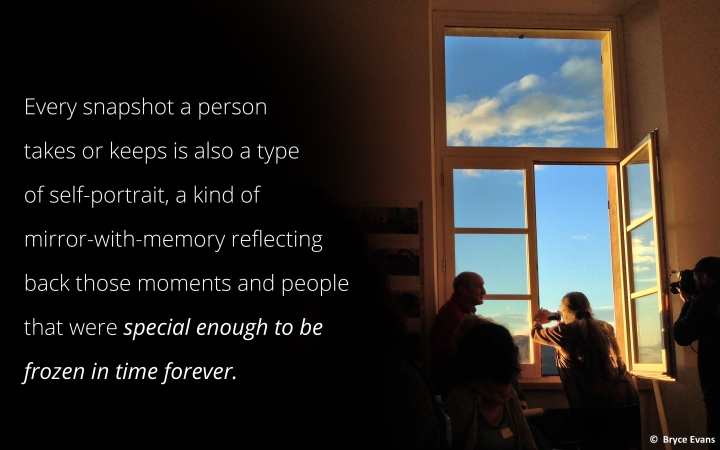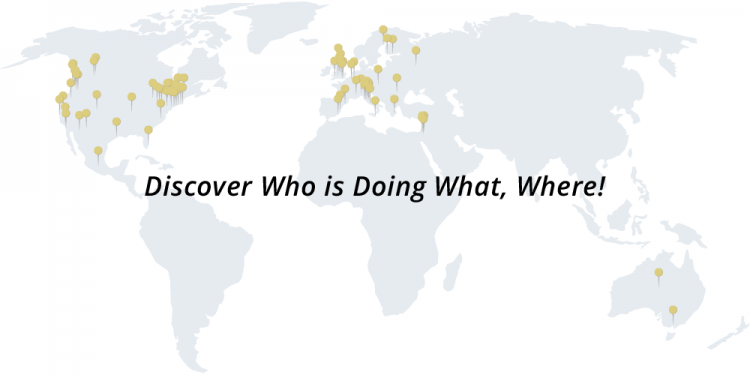“I dealt with an unexpected death in my family in the only way I knew how: by using my camera. It gave me control when I had none, it protected me when I was vulnerable. It responded immediately to how I was feeling. It helped me see when I was blind in thought. I see the camera as an extension of my being and take it everywhere with me. It’s just such a responsive tool and it’s results are immediate!”
Therapeutic Photography is the name for photo-based activities that are self-initiated and conducted by oneself (or as part of an organized group or project), but where no formal therapy is taking place and no therapist or counsellor needs to be involved.
In contrast with PhotoTherapy techniques — which are therapy practices — Therapeutic Photography techniques are photographic* practices, where the intended goal is to produce positive change in individuals, couples, or families — but they also include broader Social Action Photography techniques where the goal is to improve well-being, reduce social exclusion, and create positive change at community, societal, national, or international levels.
*Therapeutic Photography does not mean just only photo-taking.
It also includes other photo-interactive activities, such as photo-viewing, -posing, -planning, -discussing, or even just only remembering or imagining photographs.

Therapeutic Photography & Social Action Photography techniques are done for the purpose of:
- increasing self-knowledge, awareness, and well-being
- improving relationships with family and others
- activating positive change
- reducing social exclusion
- assisting rehabilitation
- strengthening communities
- enriching intercultural relations
- lessening conflict
- bringing attention to issues of social injustice
- sharpening visual literacy skills
- enhancing education
- expanding qualitative research and prevention methodologies
- producing other kinds of photo-based healing and learning
Looking at one’s own personal collection of snapshots, or creating photos oneself, can of course be personally beneficial. But doing this can also bring up deep memories and powerful emotions surprisingly quickly, which can sometimes be quite overwhelming for those not knowing how to cope with such things when they suddenly appear.
Since no prior training in therapeutic theory or counselling skills is required for those doing Therapeutic Photography, there is no protective counselling framework in place with which to immediately contain and resolve any emotional consequences that might erupt for people participating in those activities.
Therefore, doing Therapeutic Photography by oneself, even within a group setting with peer feedback, may actually precipitate the need for a therapist to help “finish” what has come to light during activities that took place without one! In contrast, working with photo-triggered personal insights and emotional reactions within the formal structure of deeper therapy process, is the very definition, function, and purpose of PhotoTherapy itself.
In Relation To PhotoTherapy
People use Therapeutic Photography techniques for their own personal self-inquiry or intentional change process, whereas therapists use PhotoTherapy techniques to assist other people (their clients) who need help resolving personal emotional problems. The results of doing photo-based self-exploration (photography-as-therapy) can often end up being serendipitously therapeutic (“healing”) on its own, especially when using the camera as an agent of personal or social change. However, this is not the same as activating and processing such experiences while under the guidance and care of a trained Mental Health professional (photography-during-therapy; i.e., PhotoTherapy).

One emphasizes therapy, the other photography.
However, the two practices are not opposites, either, and in fact overlap where they intersect — PhotoTherapy taking the process several steps deeper into guided unconscious process work within an intentional therapy framework. They are simply contrasting ways of using emotional information that has been unconsciously embedded in people’s personal snapshots. One requires the involvement of a professionally-trained therapist to formally guide and support the process, whereas the other doesn’t. One emphasizes the therapy, and the other, the photography. But this truth doesn’t mean that one is better or more valuable than the other, or that one is more “right” than the other. Rather, they are very simply not the same thing in the first place, because “personal process” is just not the same thing as formal counselling.
It might be helpful to view their relationship as two end-points of a continuum along which all photo-based exploratory practices can be positioned: PhotoTherapy at one end (photography-during-therapy; i.e., therapist-directed process where photos and interactions with them are used during the therapy process to help clients) — and Therapeutic Photography at the other end (photography-as-therapy; i.e., self-directed activities where photos are used for one’s own personal insight, even if part of a larger project).

Email Updates
To subscribe to our “News and Events” Email Notification List, click here.

